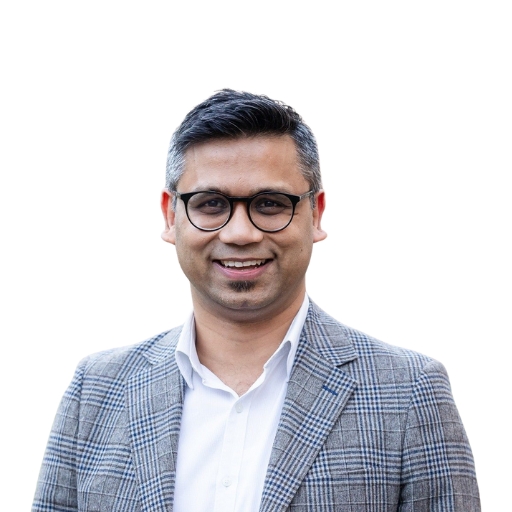Artificial intelligence (AI) is revolutionizing healthcare by streamlining patient management and optimizing operations, making processes faster and more efficient. However, as practices adopt these advancements, cybercriminals are leveraging AI to exploit vulnerabilities at unprecedented speed, leading to an alarming rise in the frequency and scale of cyber threats.
Hackers are now leveraging powerful AI tools to craft more sophisticated attacks, and healthcare practices of all sizes are potential targets. From automating phishing attacks to breaching systems faster than ever before, AI can upend the already fragile security of healthcare organizations.
Healthcare practices are especially attractive to attackers because of the sensitive data they store, including patient health information (PHI), Social Security numbers, insurance details, and credit card information. Additionally, many practices run on specialized software that, if not updated regularly, can become an easy entry point for AI-driven attacks.
The stakes are high. A single breach can lead to severe regulatory fines, loss of patient trust, and operational disruptions.
How AI is Transforming Cyber Threats
Smarter phishing scams: Traditional phishing emails often rely on generic or poorly written messages to bait victims. With AI, hackers can now generate highly convincing emails tailored to specific individuals. For example, an office manager might receive an email that appears to be from a reputable supplier, with personalized details about ongoing orders, making the scam nearly indistinguishable from a legitimate communication.
Hackers are also turning their attention to text messages and voice-based phishing (or “vishing”) attacks. A call might sound like a trusted vendor requesting payment information, while it is actually mimicked through AI-generated voice technology.
Advanced password cracking: Gone are the days when simple passwords offered sufficient protection. AI tools allow hackers to automate password-cracking attempts by analyzing patterns and testing enormous combinations in a fraction of the time it once required. Predictable or recycled passwords are an easy target for these advanced algorithms.
Faster malware development: AI enables hackers to rapidly develop malware that can adapt and evade cybersecurity defenses. Even antivirus programs and firewalls—which are critical for healthcare practices—may be unable to detect or stop certain AI-generated malware. Offices relying on outdated tools or basic protections often find themselves quickly outmatched by these evolving threats.
Exploiting vulnerabilities at scale: AI allows hackers to simultaneously scan thousands of systems for vulnerabilities. Outdated software or poorly configured firewalls can often be detected and exploited within hours.
Practical Steps to Protect Healthcare Practices
The best defense against AI-enabled cyberattacks is a proactive and multi-layered approach. Here are actionable steps tailored to healthcare offices.
Train staff to recognize email threats. AI is turning phishing emails into a refined art, making it crucial to train your staff to recognize these threats.
- Deploy advanced email filters: Use tools that detect and block suspicious emails using AI-powered threat analysis.
- Use phishing simulations: Regularly test staff with mock phishing attacks to strengthen their awareness.
- Verify emails: Encourage staff to confirm unexpected emails through other communication channels, especially those requesting account or payment details.
Enforce stronger password policies. Stricter password hygiene can provide protection against AI-driven brute force attacks.
- Use a password manager: This ensures staff create strong and unique passwords for every account.
- Adopt multi-factor authentication (MFA): Even if passwords are compromised, MFA adds an extra defense layer. Make MFA mandatory across all systems.
Invest in real-time threat monitoring and early detection. AI-powered cyberattacks are fast-moving, meaning early detection can stop damage before it’s done.
- Use managed detection and response services: Partner with a cybersecurity company that provides real-time monitoring and alerts for suspicious activity.
- Daily vulnerability scans: Engage technologies that identify and address weaknesses immediately rather than relying on periodic checks.
Keep software and hardware updated. Stay current to stay safe.
- Focus on patches: Regularly update your healthcare practice management software, operating systems, and security tools.
- Upgrade legacy systems: Replace outdated servers or devices that may no longer receive patches.
Limit access to sensitive data. Prevent hackers from exploiting user privileges to escalate unauthorized access.
- Establish role-based access control: Ensure only authorized staff can access sensitive systems and data.
- Review vendor access: Limit third-party access to critical systems and require all vendors to follow strict cybersecurity protocols.
Add a deeper level of protection with cybersecurity specialists. The risks posed by AI-driven attacks underscore the importance of maintaining a relationship with a dedicated cybersecurity provider.
- Perform security audits: A third-party cybersecurity team can assess current defenses and implement improvements.
- Create an incident response plan: Having a detailed plan ensures your team knows exactly how to react in case of an attack.
In the new world of smart technology and AI, the cost of prevention is always less than the price of a breach. Strengthening cybersecurity posture against AI-driven threats isn’t just an IT issue in a healthcare practice—it is a business-critical priority.




